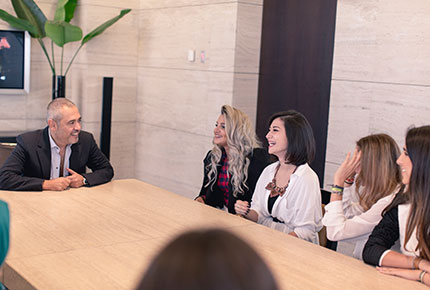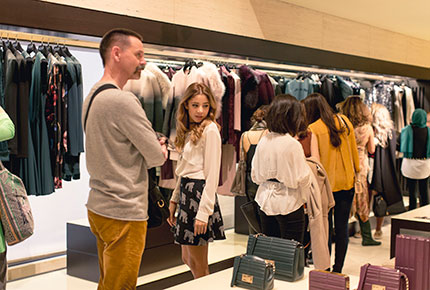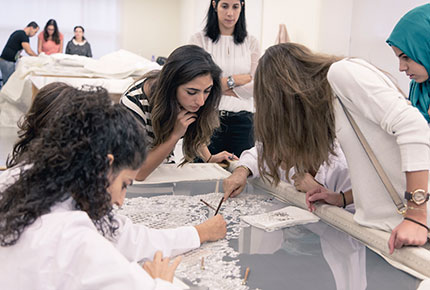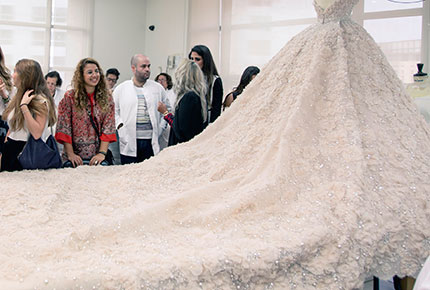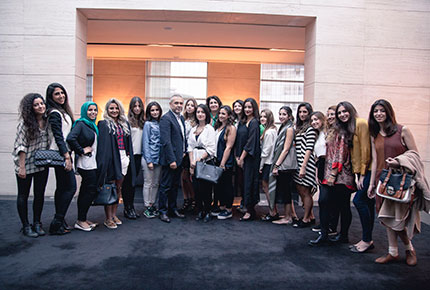Fashion students enjoy exclusive tête-à-tête with Elie Saab
LAU’s budding designers visit the Elie Saab boutique and workshop and benefit from the internationally renowned couturier’s advice.
The first cohort of LAU’s Fashion Design program students have completed their foundation year coursework. Now in the third semester of their studies, they recently enjoyed an exclusive afternoon at the ELIE SAAB headquarters in down town Beirut where they got the unique chance to meet with the internationally renowned designer.
Leading the troupe was Assistant Professor Jason Steel, who joined LAU three semesters ago to help develop and launch the program that is run in collaboration with ELIE SAAB and the London College of Fashion.
“My goal is to get the students to be who they are, not who they want to be,” said Steel. “We have nineteen strong and diverse students who at first all thought they’d be working on evening wear. Now, after encouraging them to find their true voice, we’re seeing specializations in tailoring, sportswear and fabric making, among others,” he explained.
Despite being best known for his evening wear, Saab himself continues to expand into other areas of fashion and spoke to the students about his future plans. “Today there is growing demand for ready-to-wear worldwide,” explained the Lebanese designer, “So we have been adapting to the market, gradually, by including new product lines.” Saab explained how, to cater for the customers’ needs the brand has grown from haute couture and wedding dresses, to now include ready-to-wear, accessories and most recently a perfume.
Such testimony and advice was most welcomed by the students, who are already envisioning their future as fashion icons proudly representing their country. “We are definitely the result of our culture and heritage but you have to create your own identity and present your own vision,” responded Saab to a question by LAU student Carla Khoury about the effect of culture on his achievements. “I will be very proud to encourage new designers who bring their own style and who will in turn help Beirut recover its status of the Middle East capital of fashion.”
Student Dima Youssef asked what else — in addition to a signature or identity — a designer needs to succeed. “Challenge and perseverance are key elements to success. When you are convinced of what you present you will definitely convince others.”
Saab, who did not study fashion himself but rather learned by doing from a very young age, also reminded the students of other opportunities that may await them while pursuing their studies and after they graduate. “Not all of you will become designers,” he cautioned. “There are many other fields surrounding fashion, like marketing, merchandising, and fashion journalism, that you might naturally come to.”
Undeterred, the students asked one question after another about Saab’s inspiration and the design process, which they were able to witness first hand during a walk-through of the workshop and through talks with the many people cutting, embroidering and sewing.
Four women huddled around a small piece of lace in the embroidery room were sewing bead after bead onto what would no doubt be the centerpiece of another grand wedding gown. More bridal wear was admired in the workshop — full of stockmen of all shapes and sizes, each reflecting the contours of one of Saab’s many international and high-profile clients.
“The combination of the openness of a university and the luxuriousness of a brand like ELIE SAAB is one of the many things that makes this course unique,” explained Steel as his students soaked it all in.


